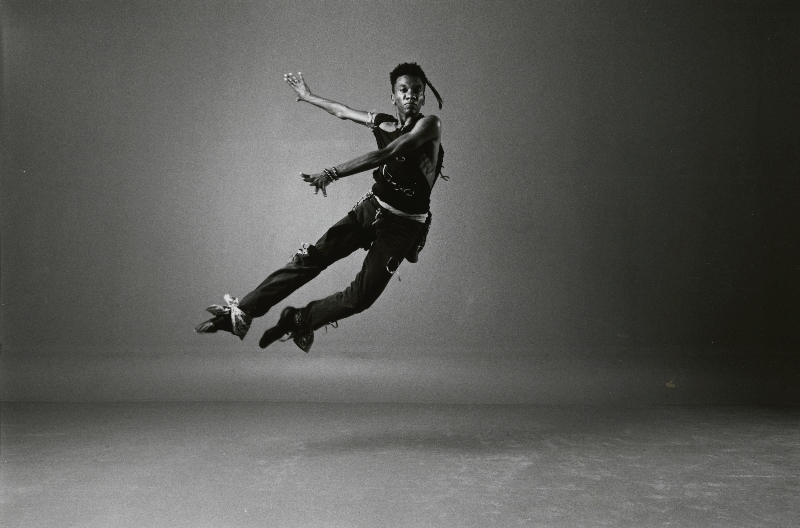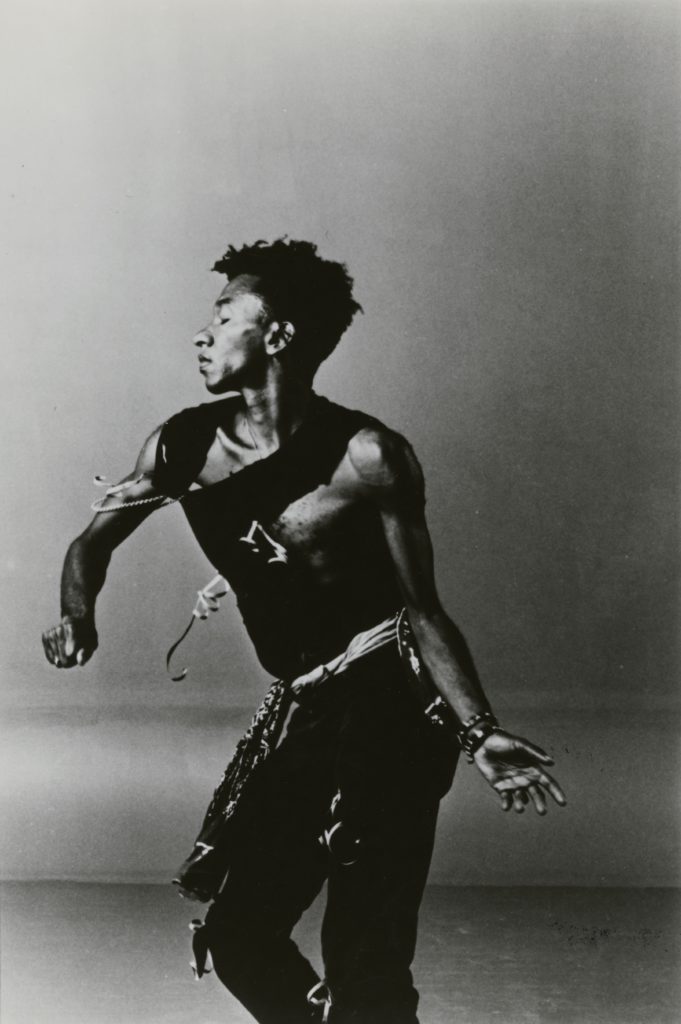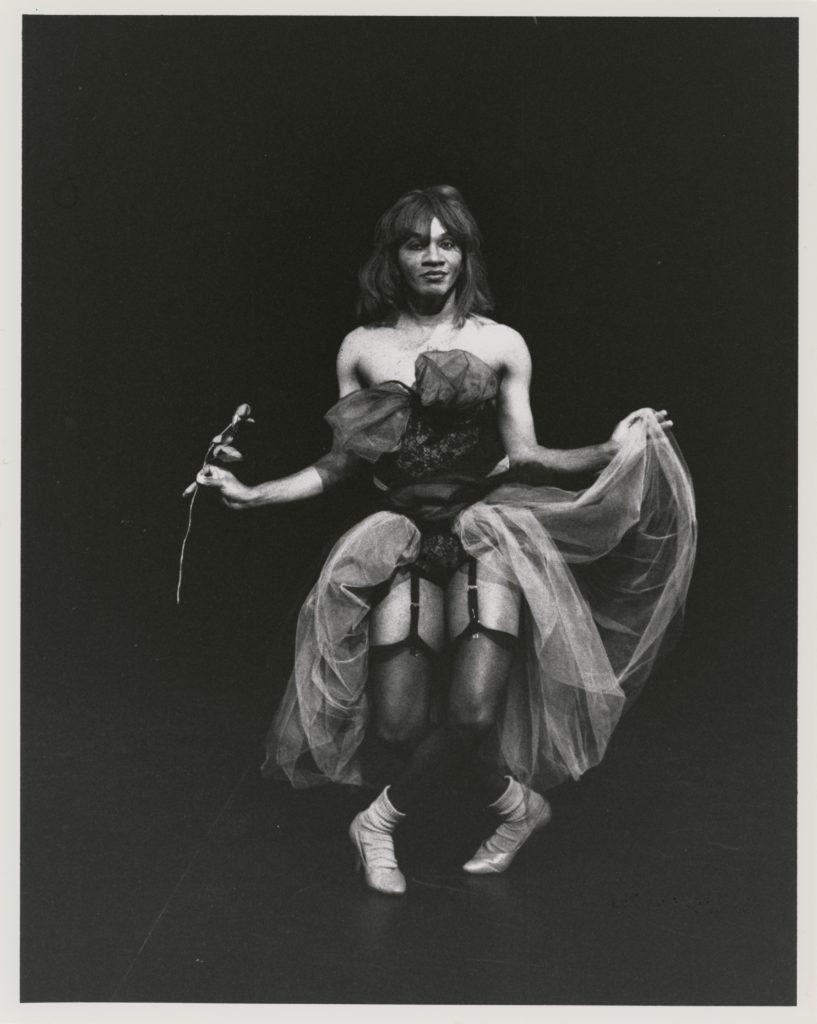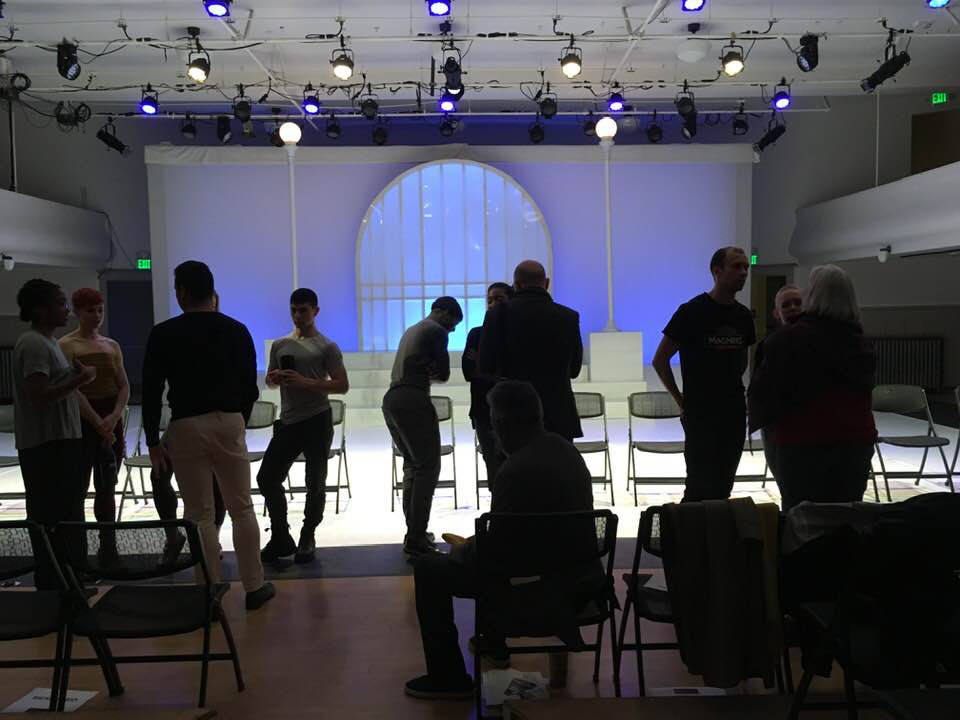

“Dance as Provocation”

Part I “Donald Byrd: The America That Is To Be” at the Frye
Art Museum, October 12 – January 26.
Susan Noyes Platt www.artandpolitics.com
Donald Byrd transforms movement into resonant art. The world-renowned choreographer Donald Bryd has been based here in Seattle since 2002. In March 2016, I wrote here about his humble base in the Madrona Bath house.
A groundbreaking retrospective of Donald Byrd’s career, curated by Thomas F. DeFrantz, Professor of Dance, Duke University, successfully overcomes the challenge of exhibiting dance in a venue designed for visual art. Videos from the 1970s to the present (from tiny to huge), as well as photographs from throughout Bryd’s astonishing career, mesmerize us as we witness his extraordinary creativity. In addition, on a low stage inside the gallery we can enjoy intimate performances by the Spectrum Dancers on Tuesday and Wednesday at noon and Saturday and Sunday at 3PM.

Donald Byrd has been radical from his first performances in Los Angeles as early as 1978, when he challenged racism, gender, and bourgeois sensibilities with a classical pas de deux that paired a “disaffected” black man and “blasé cigarette smoking” white woman. His choreography has deep classical roots, but he has consistently expanded the ways that he can confront us with deep social issues through music, movement, gesture, and settings. He deeply believes that dance can trigger social transformation.
His main inspirations are the giants of twentieth century dance George Balanchine, Merce Cunningham and Alvin Ailey, but he also explores popular traditions ranging from punk and funk to Irish jigs. His encyclopedic vocabulary of movement (as well as music) becomes his own as he embodies challenging social issues.

Earlier in his career he aimed to shock: we see him in beauty pageant drag, singing an exaggerated “God Bless America” in American Dream, 1995 in a performance that includes “a phantasmagoric patchwork of terror and display.” You will have to see it to know what this means!
In addition to confronting bourgeois race and gender clichés, Bryd rewrote classics. In his Harlem Nutcracker, 1997, Clara now an African American matriarch, welcomes her well-to-do family for Kwanzaa and Christmas in Harlem. The choreography parodies traditional ballet while it also celebrates African American dance traditions. Another even bolder retelling is The Minstrel Show, Revisited, 2016: it confronts us with the ongoing existence of the racist blackface.
At the center of the exhibition at the Frye is a gallery with four large walls filled with A CRUEL NEW WORLD/the new normal, 2013. Performed in the orange jump suits worn by prisoners and detainees, and inside a hurricane fence, with an American Flag falling on the ground, it explores, through extreme movements, the anguish of being trapped with no way out.

Also included are excerpts from the WOKENESS festival last fall that featured intense performances by his extraordinary dancers on lynching and the killing of African American men.
Finally don’t miss Donald Byrd performing Sweltering Son only two years ago!